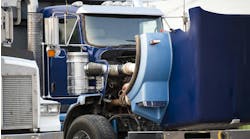As regulations governing exhaust emissions from auxiliary power units (APUs) threaten to get tighter and tighter, more and more APU manufacturers are looking to use electric batteries to power their products.
“There’s more and more interest in battery-powered systems because of the emissions issue,” Lou Siegel, said senior vp-marketing and strategic business development for Dometic Environmental Corp. In particular, the California Air Resources Board (CARB) is putting in place new regulations Jan. 1, 2008, that not only mandates diesel particulate filters (DPFs) for new APUs, but also requires them to be retrofitted for units built in 2007.
“Our battery-powered solution is exempt from the CARB regulations, since it has no internal combustion engine and produces no emissions,” said Siegel. “We have devoted a great deal of engineering resources to developing, fine-tuning and testing this technology. We are confident this is a practical and affordable solution that can keep the driver cool for 10 hours or more, while reducing fuel consumption and emissions to zero.”
Dometic’s system is offered in 7,000 and 10,000 BTU capacities and runs off a 12-volt power from a bank of absorbed glass mat (AGM) batteries, with a 2,000 watt DC-AC inverter that converts the battery output to 115 volt power to run the air conditioner. The turnkey package also includes a high-capacity alternator with external regulator, which is designed for rapid recharging of the batteries, he said.
“Although shore power connections are not yet widely available, we believe that we will see more of them installed at terminals and truckstops in the future,” said Siegel. “Our standard inverter contains a 115 volt pass-through circuit and 50 amp charger to run the air conditioner and recharge batteries when connected to shore power.”
The key with AGM batteries, he said, is that they can be recharged quickly and can handle momentary spikes in power, while are safer to use than the standard liquid-filled lead acid batteries used on trucks today.
“We’re finding more and more fleets as well as owner-operators are asking for battery powered APUs and A/C systems now, so they can avoid the emission issue completely,” Siegel noted.


